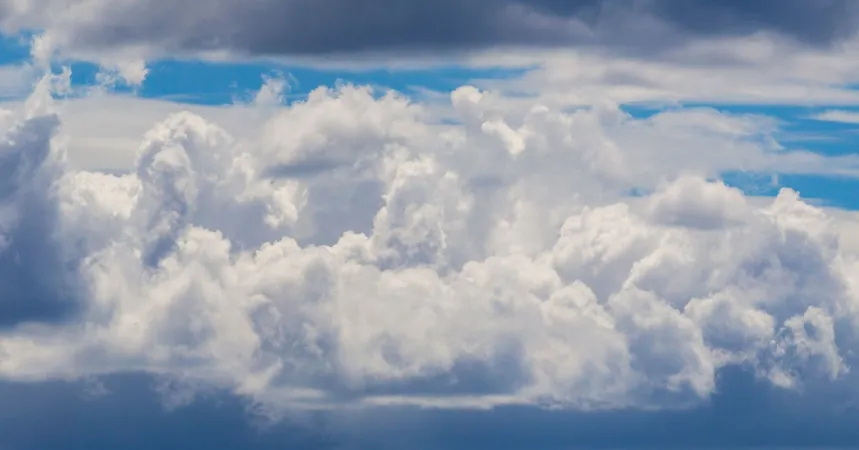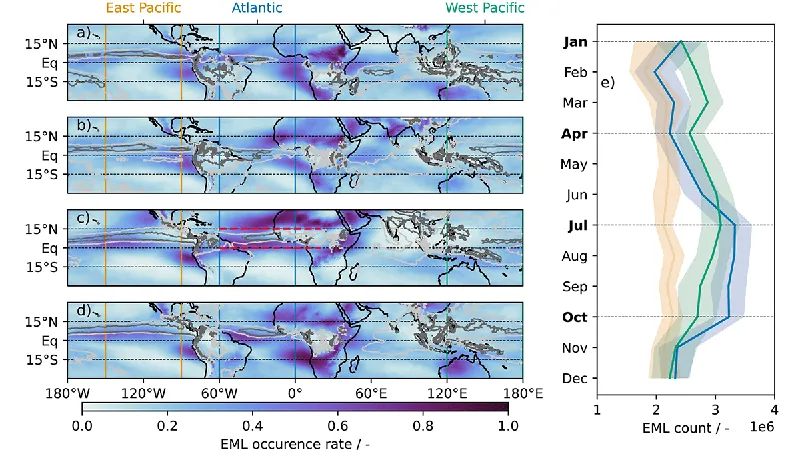
Are Microplastics Disrupting Our Weather Patterns? Here's What You Need to Know!
2024-11-10
Author: John Tan
A groundbreaking study reveals alarming evidence that microplastics, those tiny fragments of plastic that are now ubiquitous in our environment, may be playing a significant role in altering weather patterns and cloud formation.
Clouds are formed when water vapor in the atmosphere joins together with tiny particles like dust, creating droplets or ice crystals. This latest research indicates that microplastics can facilitate ice crystal formation at temperatures 5 to 10 degrees Celsius (9 to 18 degrees Fahrenheit) higher than those required for droplets without microplastics to freeze. This finding suggests that these plastic particles, which can be carried in the air, might contribute to cloud formation in conditions where ice crystals would typically not occur.
The Science Behind It
Researchers specializing in atmospheric chemistry conducted experiments to understand how various particles induce ice formation when they come into contact with water. Clouds are not just random weather phenomena; they serve essential functions in our climate system. They can consist of liquid water droplets, ice particles, or both—impacting how precipitation occurs across different regions.
Many of us learned in school that water freezes at 0 degrees Celsius (32 degrees Fahrenheit). However, in reality, water can remain liquid at much lower temperatures without something to nucleate, like dust or microbes. Enter microplastics—tiny particles that could alter this freezing point, triggering ice crystals that lead to increased rainfall or snowfall.
Why This Matters
The formation of ice in clouds is crucial for our weather systems. When ice particles create enough mass, they eventually fall as precipitation. The presence of microplastics may change the dynamic of how and when this is triggered, potentially leading to an increase in rainfall or altering snowfall patterns.
Moreover, clouds play a dual role by reflecting sunlight—leading to cooling—and absorbing heat released from the Earth’s surface—causing warming. If microplastics lead to a higher formation of ice crystals, this balance may be disrupted, affecting the Earth's energy distribution.
Research Innovation
In their experiments, scientists tested four common plastics—low-density polyethylene, polypropylene, polyvinyl chloride, and polyethylene terephthalate—under various atmospheric conditions. Remarkably, they discovered that about 50% of water droplets froze at –38 degrees Fahrenheit (–22 degrees Celsius) when microplastics were present, while regular droplets did not show such freezing tendencies at these warmer temperatures.
Interestingly, exposure to elements like ultraviolet light, ozone, and acidic conditions diminished the ice-nucleating ability of these microplastics. However, the fact that they could still facilitate ice formation raises questions about their long-term impact on our atmosphere.
Uncharted Waters
Despite the intriguing findings, much remains unknown about the full implications of microplastics on weather patterns. Future studies will need to assess how microplastics are distributed at varying altitudes, their concentrations compared to other ice-nucleating particles, and how different types of microplastics, particularly those with chemical additives, influence cloud formation.
With plastic pollution becoming an increasingly pressing issue, understanding its effects on our weather systems could be vital not only for climate science but also for addressing the broader implications of plastic waste on our planet.
The water we drink, the air we breathe, and the weather we experience are all interconnected. The potential impact of microplastics on our clouds could be one of many unforeseen consequences of pollution that we will have to grapple with as we move forward. Are microplastics on track to make our weather patterns even wilder? Only time—and research—will tell.


 Brasil (PT)
Brasil (PT)
 Canada (EN)
Canada (EN)
 Chile (ES)
Chile (ES)
 España (ES)
España (ES)
 France (FR)
France (FR)
 Hong Kong (EN)
Hong Kong (EN)
 Italia (IT)
Italia (IT)
 日本 (JA)
日本 (JA)
 Magyarország (HU)
Magyarország (HU)
 Norge (NO)
Norge (NO)
 Polska (PL)
Polska (PL)
 Schweiz (DE)
Schweiz (DE)
 Singapore (EN)
Singapore (EN)
 Sverige (SV)
Sverige (SV)
 Suomi (FI)
Suomi (FI)
 Türkiye (TR)
Türkiye (TR)